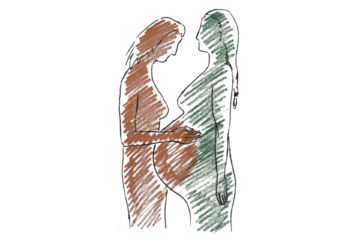The recent case of X v Y v St Bartholomew's Hospital Centre for Reproductive Medicine (CRM) (1) highlights the potential legal difficulties for children born via assisted conception of clinic error.
As has been the subject of comment previously on BioNews 792, a recent audit by the Human Fertilisation and Embryology Authority (HFEA) discovered that 50 out of 75 clinics nationwide reported anomalies in respect of the signing or keeping of forms for legal parenthood. One of those clinics was St Bartholomew's Hospital CRM, London, where there were 13 affected families; one of those families brought the proceedings in this recent case.
The issue now facing courts in many of these cases is, where licence conditions or the statutory requirements of the Human Fertilisation and Embryology Act 2008 (which make provision for conferring legal parenthood in the absence of genetic parenthood) have not been fully complied with due to clinic error, how far the court can go in rectifying the clinic's error by making a statutory declaration of parentage without undermining the need for consistency and certainty of statutory interpretation.
In the case of X v Y v CRM it was not necessary for the court to decide this point because the court was satisfied that the relevant forms had been signed by the correct people at the correct time, and the only error was one of record keeping, but the issue still remains for many other families.
As Mrs Justice Theis said in that case:
They [the applicants] make the following powerful point; that a restrictive interpretation of s.37 in these cases makes paternity 'precarious'. This is because, in reality, the uncertainty is almost entirely outside the control of X and Y. Although s.37 puts the onus on the prospective parents to give the requisite notice, the law does not expect them to know in advance what the law is or to be aware of this particular duty, but places a prior onus on the clinic to inform and counsel them and to provide them with the appropriate forms. Parents have no effective control over the clinic's compliance with the conditions of its licence or its retention of the necessary consents.
And this is the nub of the issue; where intended parents put their trust in clinics to ensure they sign the right forms at the right times, and they fully seek and intend to become the legal parents of children born as a result of their treatment, why should children and their intended parents lose the opportunity to have a legal relationship with each other from birth which reflects their intentions and their family life?
That this issue has arisen perhaps reflects the long distance which has to be travelled from the statutory provision to the treatment room via the HFEA Code of Practice and Guidance. Those responsible for ensuring the right documents are signed by the right people at the right times, with a proper understanding of what they are signing and why, are not lawyers. They are nurses and intended parents and their focus is elsewhere - on the conception of a much-wanted child.
St Bartholomew's in the case of X v Y v CRM outlined to the court the steps that had been taken by the Trust in the light of these events to ensure that similar problems did not arise again in the future. These included implementing as standard practice a requirement for couples, irrespective of their relationship status, to sign the WP and PP forms before their treatment begins, and the checking of consent forms at daily meetings.
However, the problem is deeper than simply following procedure, the issue is whether, when dealing with such a sensitive and important issue as legal parentage, nurses and intended parents are properly equipped to carry the responsibility without more support.
It is noted that since the decision in AB v CD (2) which brought the problem to light, the HFEA Code of Practice has been amended to provide clinic staff with a better explanation of the distinction between legal parentage and parental responsibility. This is a significant improvement on the previous version of the Code of Practice which gave little explanation of the difference between parenthood and parental responsibility. Mrs Justice Theis also highlighted in the case of X v Y and CRM the need for parents to take their own advice:
The important message from this case is that any person considering fertility treatment should ensure they are, at the very least, familiar with what legal steps need to be taken prior to any such treatment, particularly concerning the issue of consent. This is because any failings by the clinic to follow the requisite procedures may have long term consequences for them, and any child born as a result of the treatment.
It is not simply the signing of the forms which is important, it is also the understanding of the forms and why they are necessary and what effect they will have by both those signing them and those providing them to parents to sign.
In my experience parents are often unclear about what they have signed and why, and what the effect was, having signed so many documents and forms during the course of their treatment. This is particularly the case in families undertaking surrogacy arrangements where there may be three or four concerned adults involved.
The outcome for the numerous families who have been affected by the findings of the HFEA Audit remains hanging in the balance, but just as the HFEA took on board the observations of Mr Justice Cobb in AB v CD it is to be hoped that the current wave of cases will prompt a further look at guidance and training for clinic staff, information and guidance for parents, and that long road between statutory provision and treatment room where there are many opportunities for misunderstanding or mistake.
Marisa Allman was counsel for the Respondent in AB v CD [2013] EWHC 1418 and advocate to the court in X v Y v St Bartholomew's Hospital Centre for Reproductive Medicine (CRM) and CAFCASS Legal [2015] EWFC 13







Leave a Reply
You must be logged in to post a comment.